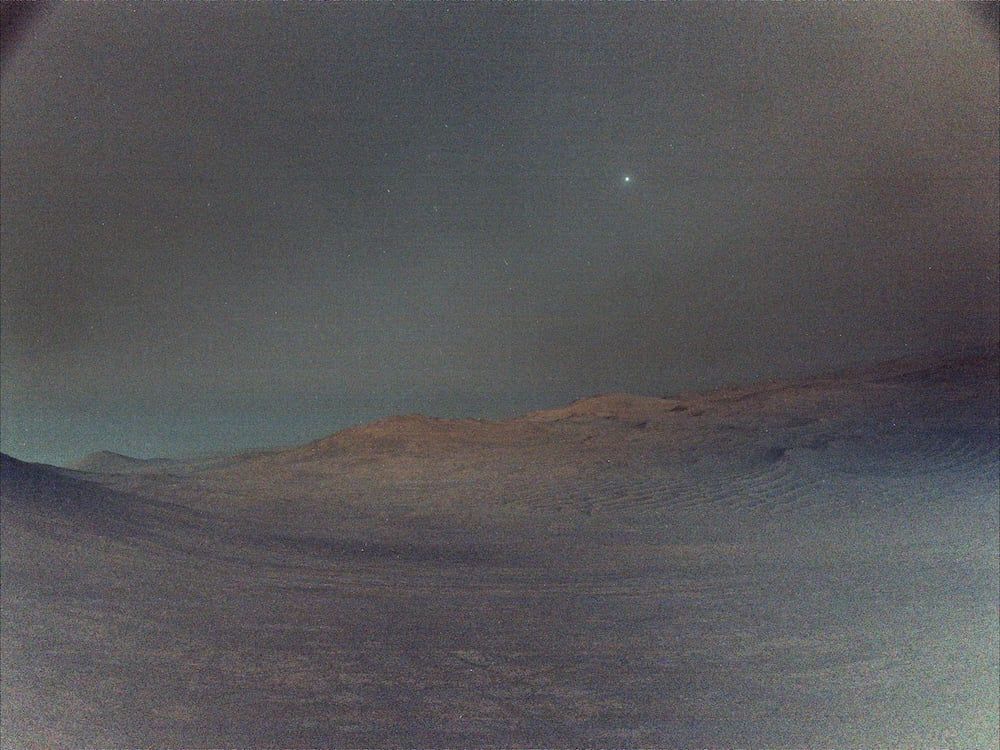NASA's Mars Perseverance Rover is perhaps the most sophisticated Martian explorer to date, It's been exploring and investigating Jezero Crater since its arrival there in February 2021. This car-sized rover is hunting for signs of ancient microbial life while collecting rock samples for future return to Earth. It carried along the Ingenuity helicopter—the first powered aircraft to fly on another world—and instruments to analyse and study the Martian environment. As Perseverance traverses the rusty terrain, its high-resolution cameras and microphones capture unprecedented views and sounds.
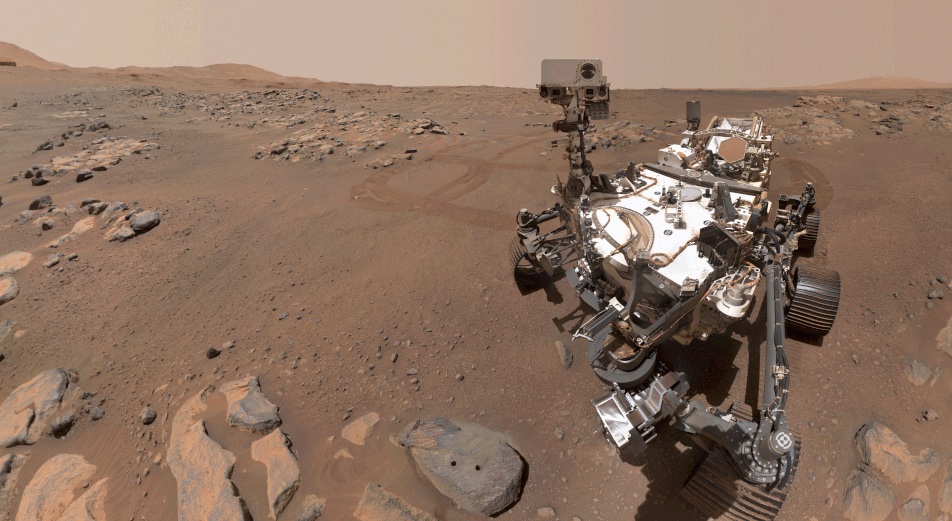 NASA's Perseverance Mars rover took this selfie over a rock nicknamed "Rochette" (Credit : NASA/JPL-Caltech)
NASA's Perseverance Mars rover took this selfie over a rock nicknamed "Rochette" (Credit : NASA/JPL-Caltech)
The rover captured a remarkable view of Deimos, Mars' smaller moon, travelling across the pre-dawn Martian sky on March 1, 2025 (Sol 1,433 of the mission). Working in near-darkness at 4:27 a.m. local time, the rover's left navigation camera pushed its capabilities to the limit, taking sixteen consecutive shots at its maximum exposure time of 3.28 seconds each. These images were automatically combined onboard the rover into a single composite representing approximately 52 seconds of total exposure before being transmitted back to Earth.
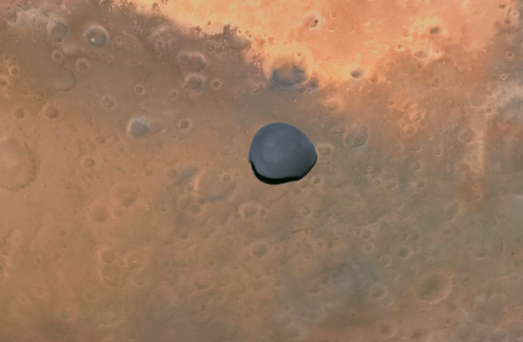 Deimos against the planet Mars (Credit : NASA)
Deimos against the planet Mars (Credit : NASA)
The challenging low-light conditions resulted in considerable digital noise and haziness throughout the image, with many white specks likely being camera artefacts or cosmic rays striking the sensor. Nevertheless, the celestial scene successfully captured not just Deimos but also two prominent stars from the constellation Leo—Regulus and Algieba—shining brightly against the Martian night sky.
Whilst Perseverance was watching Deimos from the surface of Mars, ESA's Hera planetary defence mission was conducting a Martian flyby on March 12th. Three instruments were used to capture images of the Martian surface and Deimos too. Launched in October 2024, Hera is on its way to study the asteroid Dimorphos. The flyby brought Hera within 5,000 km of Mars, using the planet's gravity to redirect the spacecraft toward its final destination while conserving months of travel time and significant fuel. Racing past at 9 km/s, Hera photographed Deimos from just 1,000 km away, capturing the rarely-seen far side of this tidally locked moon.
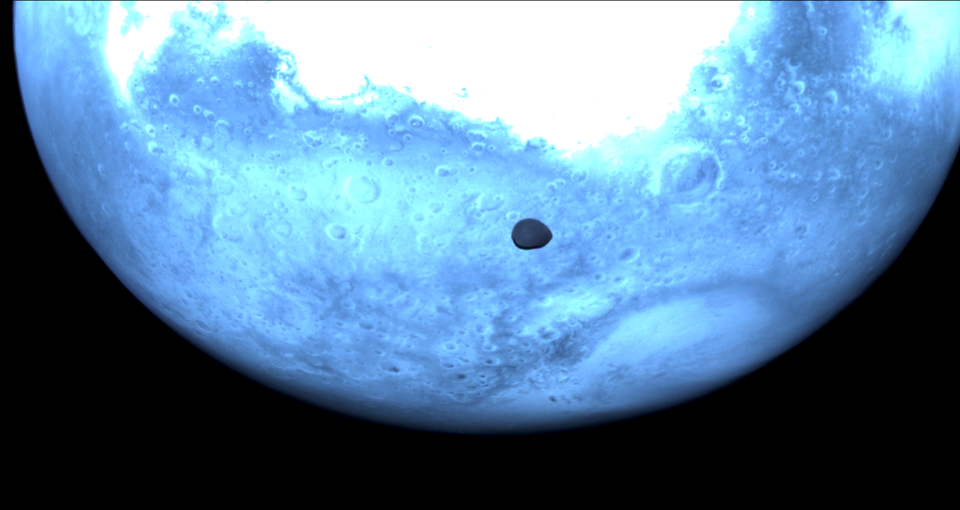 Mars and Deimos viewed by Hera's Hyperscout H (Credit : ESA)
Mars and Deimos viewed by Hera's Hyperscout H (Credit : ESA)
Perseverance continues to explore the Martian landscape and the Jezero Crater, making key discoveries in both geology and atmospheric science. It recently captured the first-ever visible-light aurora on Mars, an observation made possible by solar activity and Mars' lack of a global magnetic field. The rover has also been collecting rock samples, including a significant core containing serpentine minerals, which hint at past water activity and potential ancient microbial life. It has also examined a dark, skull-shaped igneous rock formation and collected samples from a site dubbed "Silver Mountain."
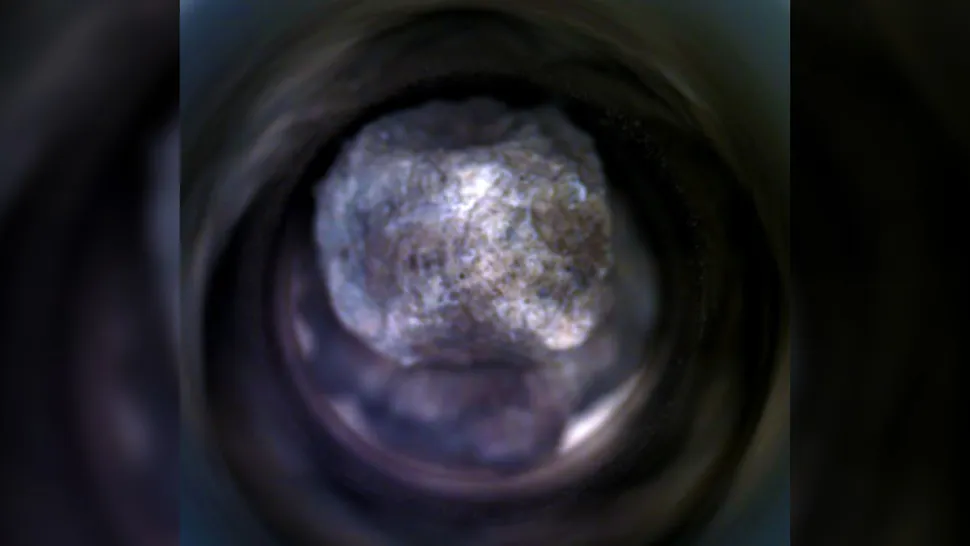 A "Silver Mountain" rock sample collected by NASA's Perseverance Mars Rover as it explores the rim of Jezero Crater. (Image credit: NASA/JPL-Caltech)
A "Silver Mountain" rock sample collected by NASA's Perseverance Mars Rover as it explores the rim of Jezero Crater. (Image credit: NASA/JPL-Caltech)
As it moves steadily onward, Perseverance is not only uncovering Mars' hidden geological and atmospheric stories but also paving the way for future exploration and sample return missions. Its recent image of Deimos drifting across the pre-dawn sky offers a rare and poetic glimpse of Mars' celestial surroundings. This moment was echoed from above as ESA's Hera spacecraft conducted a high-speed flyby, photographing the far side of Deimos while en route to its asteroid target. Together, these observations from ground and orbit highlight the growing international effort to explore Mars and its moons. With each new discovery—from ancient mineral-rich rocks to dazzling auroras—Perseverance continues to deepen our understanding of the Red Planet while setting the stage for the next generation of exploration.
Sources :Deimos Before Dawn,Hera asteroid mission spies Mars' Deimos moon and Perseverance Rover Updates
 Universe Today
Universe Today
